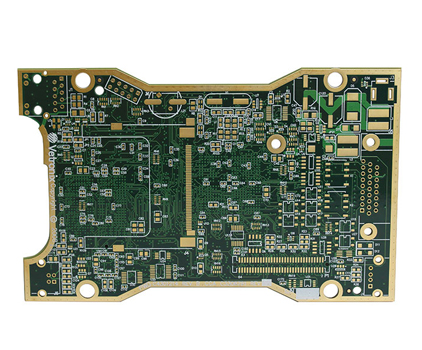PRODUCTS
High Frequency Board Design Secrets

High-frequency board design is a complex field, demanding a deep understanding of electromagnetic theory and practical implementation techniques. While seemingly esoteric, its impact is pervasive, touching everything from our smartphones and laptops to advanced radar systems and 5G infrastructure. The challenges inherent in designing for high frequencies – often measured in gigahertz – are significant, leading to the need for specialized knowledge and meticulous attention to detail. This is where a book like "High Frequency Board Design Secrets" becomes invaluable. This comprehensive guide delves into the often-overlooked intricacies of signal integrity, impedance matching, and electromagnetic interference (EMI) mitigation at high frequencies, providing designers with the practical knowledge necessary to avoid common pitfalls and create robust, high-performance circuits. This exploration will unpack key aspects covered within such a resource, shedding light on the crucial considerations for successful high-frequency design.
Understanding Transmission Line Effects
At high frequencies, the physical dimensions of the PCB traces become comparable to the wavelength of the signal. This means that simple circuit analysis based on lumped elements (resistors, capacitors, inductors) breaks down. Instead, the traces must be treated as transmission lines, characterized by their characteristic impedance (Z0) and propagation delay. Understanding the behavior of these transmission lines – including reflections, standing waves, and signal attenuation – is paramount to successful high-frequency design. A book like "High Frequency Board Design Secrets" would likely detail various transmission line models, such as the lossless transmission line model and models incorporating conductor and dielectric losses. This understanding allows designers to predict signal integrity issues and implement appropriate mitigation strategies.
One key concept related to transmission lines is impedance matching. Mismatches at the source, load, or any discontinuities along the transmission line lead to reflections, which can degrade signal quality and even cause instability. Proper impedance matching, using techniques like matching networks or impedance-controlled trace geometries, is crucial for maximizing signal power transfer and minimizing signal distortion. The book would likely provide detailed examples and practical guidance on implementing these techniques, including the use of impedance calculators and simulation tools.
Controlling Signal Integrity
Signal integrity encompasses all aspects of ensuring that signals arrive at their destination with minimal distortion and acceptable timing margins. At high frequencies, this becomes even more critical due to the increased susceptibility to noise and interference. A significant portion of "High Frequency Board Design Secrets" likely focuses on various techniques for controlling signal integrity. This could include minimizing trace lengths, utilizing controlled impedance techniques, implementing proper grounding and decoupling strategies, and selecting appropriate components and materials.
Careful consideration of the layout is crucial. This involves strategically placing components to minimize crosstalk and electromagnetic interference, using ground planes effectively to shield sensitive traces, and routing high-speed signals with proper spacing and shielding. The book would likely provide detailed layout guidelines and best practices, potentially including examples of good and bad layouts to illustrate the importance of these considerations. The use of simulation tools to validate layout decisions is also a crucial element, often highlighted within such resources.
Managing Electromagnetic Interference (EMI)
High-frequency circuits often radiate significant electromagnetic energy, which can cause interference with other circuits or systems. Managing EMI is therefore a critical aspect of high-frequency board design. "High Frequency Board Design Secrets" would undoubtedly cover various techniques for EMI mitigation, such as proper grounding and shielding techniques, the use of EMI filters, and careful layout to minimize radiated emissions.
Shielding, using conductive enclosures or ground planes, is vital for containing electromagnetic emissions. The book would likely discuss different types of shielding, their effectiveness, and their implications for design complexity and cost. Choosing appropriate materials, understanding the effects of apertures and seams, and ensuring proper grounding of the shield are all important aspects covered within such a guide. The use of simulation tools like electromagnetic solvers (e.g., Ansys HFSS) to predict and optimize shielding effectiveness would be a key takeaway.
Component Selection and Considerations
The choice of components is crucial in high-frequency design. Passive components like capacitors and inductors exhibit parasitic effects (e.g., inductance in capacitors, capacitance in inductors) that become significant at high frequencies. "High Frequency Board Design Secrets" would advise on selecting components with low parasitic effects, considering factors such as the ESR (Equivalent Series Resistance) and ESL (Equivalent Series Inductance) of capacitors and the Q-factor of inductors. The book would likely include a detailed discussion on the selection criteria for different types of capacitors (e.g., ceramic, film) and inductors suitable for high-frequency applications.
Similarly, the selection of connectors and other interface components is vital to maintain signal integrity. Connectors with poor impedance matching or high insertion loss can introduce significant signal degradation. Understanding the characteristics of different connector types and selecting the appropriate ones for the application is crucial, a topic likely covered extensively in the book. The book would stress the importance of selecting components with specifications suitable for the operating frequency and power levels.
In conclusion, "High Frequency Board Design Secrets," or any similar resource, serves as a critical tool for engineers tackling the challenges of high-frequency design. The detailed understanding of transmission line effects, meticulous attention to signal integrity, effective EMI management, and careful component selection, as highlighted above, represent just some of the key aspects necessary for success. Mastering these principles is fundamental for creating reliable, high-performance products in this increasingly critical domain.
SUBSCRIBE
INQUIRY

